Name Merle Robertson | ||
 | ||
Died April 22, 2011, San Francisco, California, United States Books The Sculpture of Palenque, Never In Fear, Rubbings of Maya Sculpture | ||
Merle Greene Robertson (August 30, 1913 – April 22, 2011) was an American artist, art historian, archaeologist, lecturer and Mayanist researcher, renowned for her extensive work towards the investigation and preservation of the art, iconography, and writing of the pre-Columbian Maya civilization of Central America. She is most famous for her rubbings of Maya carved stelae, sculpture, and carved stone, particularly at the Maya sites of Tikal and Palenque.
Contents
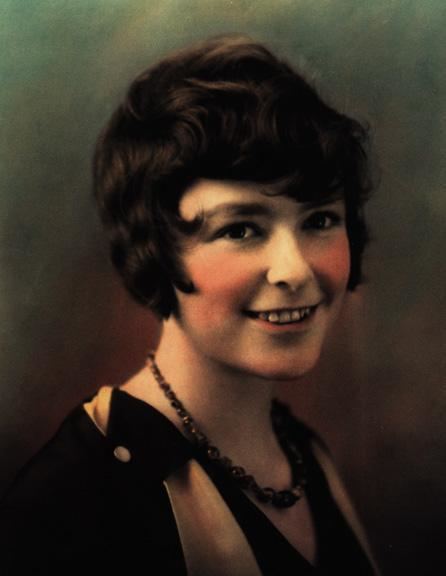
Early life and education
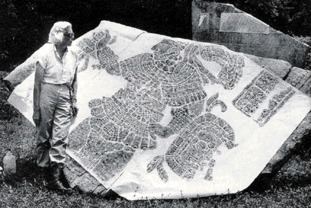
Robertson was born in 1913 in the small town of Miles City, Montana to Ada Emma Foote and Darrell Irving McCann, but she moved to Great Falls, Montana as a small child. Here she became greatly interested in Native American culture and even learned Indian sign language from Blackfoot Indian chiefs her father was close friends with. But more importantly, in Great Falls she met the artist Charles M. Russell who spent many afternoons teaching Merle how to paint. She moved to Seattle, Washington as a teenager and completed high school there and attended the University of Washington.
Adulthood
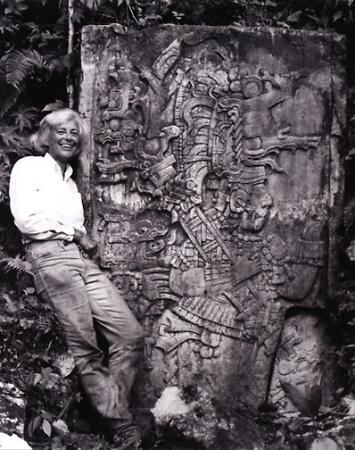
Merle started working as a commercial artist and gold leaf window painter; during the summers she worked at Camp Tapawingo. Following her graduation, Merle married her college boyfriend Wallace McNeill Greene. The couple was married for thirteen years and had two children, David and Barbara. However, the marriage dissolved when Merle found out her husband had participated in multiple affairs throughout the years. After the divorce, Merle and her children moved to California where she began teaching at San Rafael Military Academy. There is where she first met Bob Robertson, the dean, who she would marry later on. She later decided to go back to school and moved to San Miguel de Allende, Mexico.
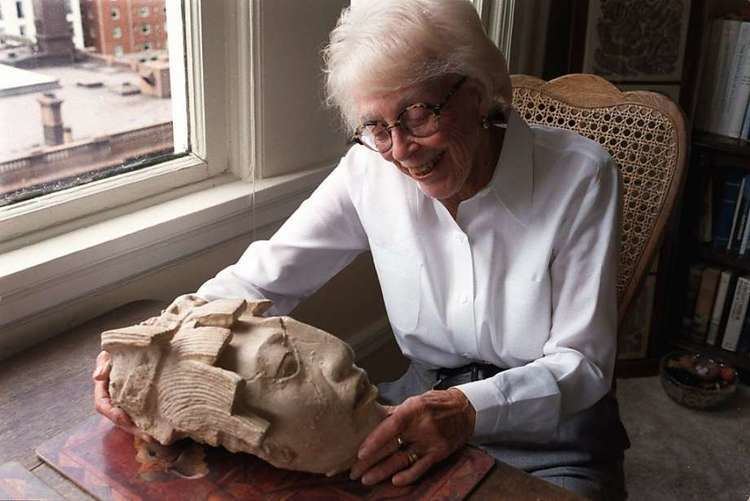
She earned her Master's of Fine Arts from the University of Guanajuato, where she studied watercolors, oils, photography, and mural painting from one of Mexico's top artists, James Pinto. After completing her MFA, Merle began working on the Tikal Project with the University of Pennsylvania in 1961. She spent three summers drawing the architecture of the Central Acropolis. She also started her famous rubbings at this time, making the art form a way to document and preserve the information on Maya relief sculptures. While she was there, it was suggested that she travel through Guatemala and record stelae at other sites.
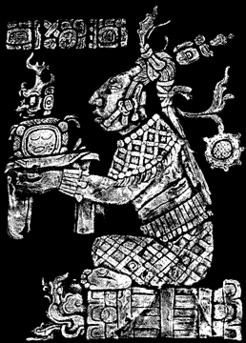
While Merle carved out a path for herself as a Mayanist she continued to teach school in the states. She and her husband Bob both worked at the Stevenson School in Pebble Beach, California; this is where Merle first began to instill her love of the Maya into young students. She taught a Mesoamerican Archaeology class and she took many of her students on expeditions into the jungles of Central American. Some of her students even went on to study archaeology at college and pursue a career studying the Maya, one of the best examples being Mayanist Arlen F. Chase.
Rubbings
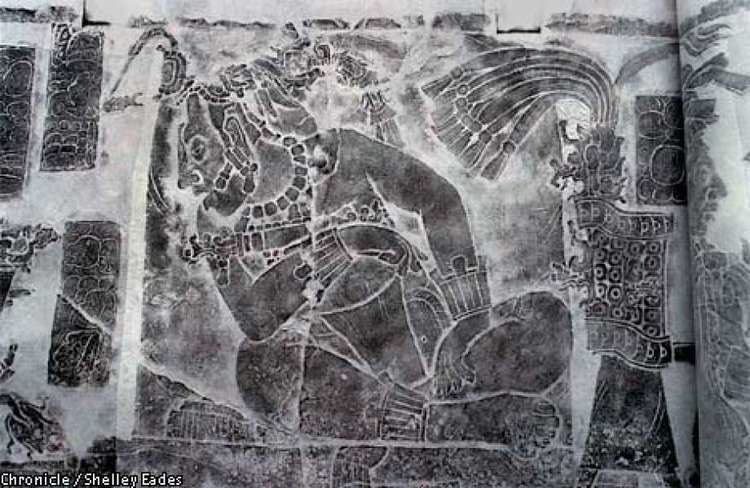
Initially trained as an artist, Robertson pioneered the technique of taking rubbings from Maya monumental sculptures and inscriptions, making over 4,000 of these over a career spanning four decades (2,000 being monuments). In many cases these rubbings have preserved features of the artworks which have since deteriorated or even disappeared, through the actions of the environment or looters. This method was first used by the ancient Chinese but Merle further developed and refined the process. She developed two techniques using two different forms of ink on rice paper. The type of ink that was chosen was based on the environmental conditions and the nature of the item being recorded. Merle, along with Mayanist Tatiana Proskouriakoff and Edith Ricketson, paved the way for women to enter the field of Maya archaeology. She was the first woman to join the Tikal Project, at a time where it was generally understood that women were not to work on archaeological projects.
Merle is most well known for her work at Palenque. In the 1980s, she undertook a project to document and record in detail all the sculptural art. This led to the instrumentation of the series of Mayanist conferences known as the Palenque Round Tables, which have produced some of the most significant breakthroughs in Maya research and the epigraphic decipherment of the ancient Maya script. The meetings started in December 1973 and ended in June of 1993. A total of 10 of the proceedings of the round table meetings have been published as volumes.
Merle also famously worked at Chichen Itza for many years. Here she also created a large, encompassing report of all the sculptures at the site. Not only did she record the hieroglyphic and iconographic inscriptions, she also interpreted the work through the eyes of the authors. This showed her unique perspective as an artist rather than a formerly trained archaeologist.
In 1982, Merle founded the Pre-Columbian Art Institute, which publishes the PARI Journal. This non-profit organization supported the research of Mesoamerican art, epigraphy, and iconography and funded archaeological excavations at Palenque under the Cross Group Project.
In 2004, Robertson received the Orden del Pop Award from Guatemala's Museo Popol Vuh in recognition of her decades of work preserving the country's Maya cultural heritage through her detailed documentation of Maya monuments and hieroglyphic writing. This Instituto de Nacional de Anthropologia e Historia (INAH) also presented Merle with the Order of the Aztec Eagle and named her Honorary President of the Palenque Round Tables which have since continued.
List of Sites (links to rubbings on mesoweb.com)
Abaj Takalik
Aguas Calientes
Aguateca
Altar de Sacrificios
Bilbao
Bonampak
Campeche
Cancuen
Caracol
Chichen Itza
Chinikiha
Chuitinamit
Copan
Cuilipan
Dos Pilas
Dzibilchaltun
El Anonal
El Baul
El Cayo
El Palmar
El Zapote
Etzna
Flores
Hauberg Stela
HecelchacanAbaj Takalik
Aguas Calientes
Aguateca
Altar de Sacrificios
Bilbao
Bonampak
Campeche
Cancuen
Caracol
Chichen Itza
Chinikiha
Chuitinamit
Copan
Cuilipan
Dos Pilas
Dzibilchaltun
El Anonal
El Baul
El Cayo
El Palmar
El Zapote
Etzna
Flores
Hauberg Stela
Hecelchacan
Itsimte-Sacluk
Itzan
Itzimte-Bolonchen
Ixkun
Ixlu
Ixtutz
Izapa
Jimbal
Jonuta
Kabah
Kaminaljuyu
La Amelia
La Mar
La Mojarra
La Nueva
La Pasadita
Lacanha
Lamanai
La Venta
Machaquila
Miramar
Motul de San Jose
Naranjo
Nim Li Punit
Orizaba
Palenque
Palo Gordo
Palo Verde
Pebetaro
Piedras Negras
Polol
Pomuch
Popola
Quirigua
San Miguel Fort
San Pedro Fort
Santa Lucia Cotzumalhuapa
Seibal
Tamarindito
Tazumal
Tikal
Tonina
Tres Islas
Tula
Tunkuyi
Uaxactun
Uolantun
Usumacinta Area
Uxmal
X'telju
Xcalumkin
Xculoc
Xunantunich
Yaxchilan
Yaxha
Yocha
Yula
Zoc Laguna
